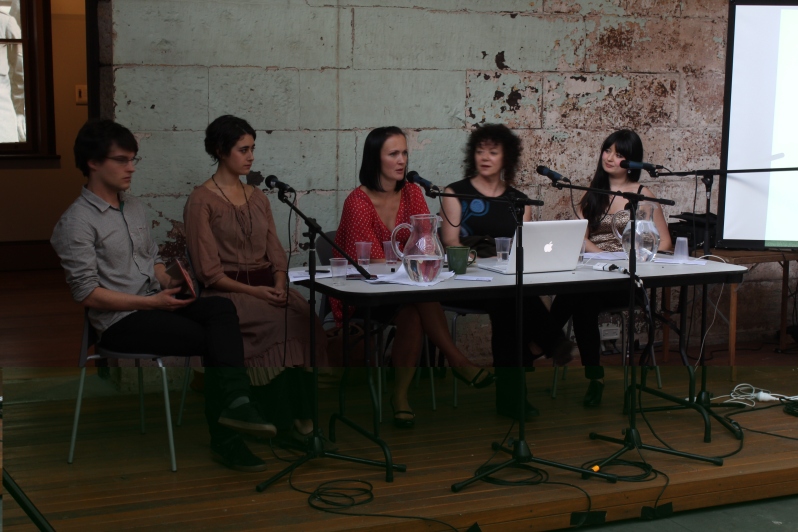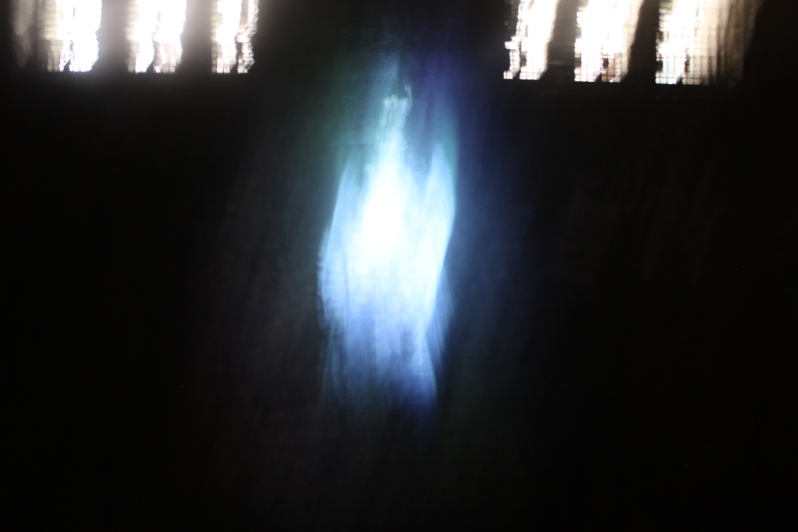As Carriageworks in Sydney gets ready for Death(cha) Kucha next Friday, here’s Sydney Education Officer Gabe Watt’s version of past events sponsored by Sydney CHE.

Bodies in Distress @ Critical Animals, 27-30 September 2012
We’re still trying to put our finger on it. On just what it is that happens when you bring in practicing artists to work with academic scholars and explore the past in tandem. We do know what occurred. The Sydney node of the ARC Centre of Excellence for the History of Emotions invited artists Carolyn McKay, Mimi Kelly and vocalist Grace Turner to collaborate on a research project we called Bodies in Distress.
The project began when Gabriel Watts, Education and Outreach officer at the CHE Sydney node, tracked down Carolyn and Mimi as collaborators. Sydney node post-docs Rebecca McNamara and Una McIlvenna met with Carolyn and Mimi – both PhD candidates at the University of Sydney – and discussed each other’s research. Rebecca works recovering emotions related to suicide from medieval legal records and chronicles. Carolyn constructs artworks from witness testimony at murder trials. Mimi places her own body at the centre of moral spectacles. Una researches the moral emotions evoked by early modern execution ballads. We could see some nice connections.

We applied to the Critical Animals Creative Research Symposium held annually in Newcastle, NSW, as part of the This Is Not Art festival. They gave us a weekend slot at the Lock-Up Cultural Centre, Newcastle’s first police station, and we started getting serious. Mimi travelled to Newcastle and spent hours in a dank sandstone cell researching the impact of that space on an audience. We recorded ourselves reading Rebecca’s legal records and Carolyn began working them into a haunting soundscape. Una was particularly keen to have a singer perform some of the execution ballads she researches, and a spooky ex-gaol seemed like a perfect venue to explore audience reactions to the conjuncture of song and punishment. Carolyn suggested Grace, a student at the Newcastle Conservatorium of Music whose voice and sensibility matched the project perfectly.
We decided to put on a three-day exhibition of Mimi and Carolyn’s works over the September long weekend, with a panel discussion on Saturday afternoon. Carolyn’s soundscape, Felonia de se, was set up to drift eerily out of the lock-up’s tiny padded cell, the legal verdicts on medieval suicide adding to the cell’s visibly painful history. Mimi’s video installation of an ambiguously suspended figure, Hang, was projected on the wall of another cell. This was also the location for Grace’s performance of three execution ballads, her plaintive voice echoing off the walls of the dark cell, while Una provided historical context for the ballads. The entire audience joined us for the vibrant panel discussion afterwards, eager to hear more about research into the nature of crime, punishment, pain and the body.
We also filmed the whole thing, from planning to performance. Cassie Charlton, a student at the Australian Film Television and Radio School (and the Sydney node CHE Admin Officer), documented our early meetings, rehearsals, and the exhibition. She even filmed as we packed up. Throughout the whole project we kept asking, how can researchers across various humanities disciplines tackle shared questions and learn from each other, and how can we creatively present our research interests to the public? These are good questions for which the Centre for the History of Emotions is well placed to think through some answers.
Bodies in Distress has energized us to look at our research projects from new perspectives, and with a better grasp of how our interpretations of the past can resonate with a modern Australian audience. Rebecca, for example, found in Carolyn’s art a similar process of peeling back of layers of legal narrative to uncover the heart (emotions) of hidden voices and taboo subjects. Una found that Mimi’s work provoked her to ask new questions about the body, pain and the spectacle of the macabre. And having Grace sing ballads that have lain quiet for hundreds of years demonstrated the power of music to affect an audience in any age.
Best of all, you can see for yourself! Here’s a link to our short video documenting Bodies in Distress:
and Carolyn’s soundscape Felonia de se:
Lastly, the Sydney CHE would like to thank Carolyn, Mimi, and Grace for making Bodies in Distress the truly collaborative project that it was.
If you or someone you know needs help, contact Lifeline’s 24-helpline on 13 11 14, SANE Australia on 1800 18 7263, or the Beyondblue Info Line 1300 22 4636.
Posted by Gabriel Watts




